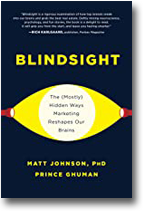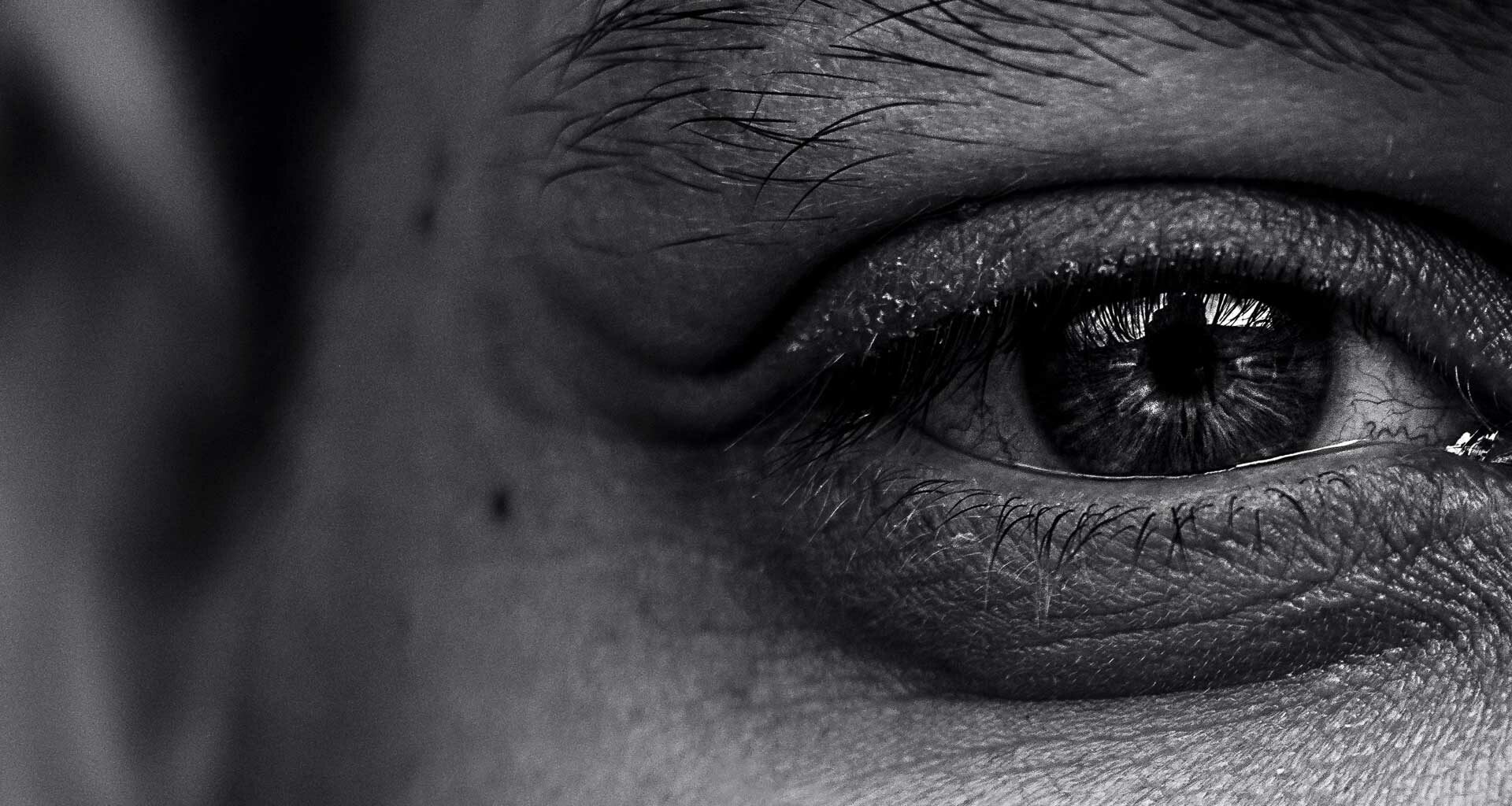The future of face-based, personalized marketing is here along with a horizon of opportunity for marketers and fresh headaches for regulators.
Michael Jackson’s Man in the Mirror urges that if we want to change the world, we have to start with the man (or woman) in the mirror.
But what if that mirror could be distorted? What if it wasn’t our own reflection looking back at us, but a projection of ourselves controlled by others? And what if this projection wasn’t trying to ‘make the world a better place’? But instead, it’s our own face looking back at us and persuading us to buy something?
by Matt Johnson, Phd., and Prince Ghuman
Modern technology has made exactly this type of marketing possible. It has made personalized marketing more realistic and more compelling than ever before. And as we’ll see, the science of persuasion indicates the greatest marketer of all is the man in the mirror. Step aside Jordan Belfort and Robert Cialdini, no one persuades you like you do.
The future of personalization is here. To understand how we got here, we have to look back at the past, and at the original science of personalized persuasion: the distinctiveness of our own names.
The Psychology Behind Our Names
Personalization is nothing new. From email marketing to sales, to customer targeting, the power of speaking directly to the customer is already a powerful marketing tactic. What sounds and feels right, “Dear <insert your first name here>,” or the generic “Dear Valued Customer”? This subtle change makes a huge difference.
The obvious reason for calling you by your name is to foster a stronger emotional connection. But there’s also an obscure, much less appreciated reason: your name captures your attention like no other word can.
Psychologists call this the cocktail party effect. Here’s why. Imagine this scenario: You’re at a crowded party, catching up with a close friend. You’re engrossed in the conversation, oblivious to the chatter of voices in the background. Then all of a sudden, twenty feet behind you, you hear it: your name. Ten seconds ago, you had no idea what that person was talking about, but now your ears are glued to their conversation.
The cocktail party effect has been replicated by a series of psychological studies dating back to the 1950s. We process whatever we’re currently focused on (such as the conversation with a close friend), but we also reserve a small slice of our attention pie just in case something pops up within the background noise that we wouldn’t want to miss. And the word our attention always unconsciously shifts for? Our own name.
This works just as well as reading our own name, too. It’s no wonder Coke started the practice of slapping common names onto their soft drinks. Above and beyond the feel-good personalization and the gift-giving aspect, this also drives attention via the cocktail party effect. It doesn’t matter if you’re scanning the aisle or not; if your name’s there, your attention will naturally find it.
From the Psychology of Names to the Psychology of Faces
And here’s where this new face technology comes into play. Recent research suggests that we don’t just have a special kind of attention for our own names, but for our faces as well. In other words, the visual cocktail party effect.
Here’s what’s most interesting about the visual cocktail party effect: Your brain recognizes your face even when you consciously don’t. If you’ve been asked to watch faces on a screen quickly, you wouldn’t be able to describe them. The participants in a laboratory study couldn’t either. But if you were hooked up to an electroencephalography (EEG) machine that detects what your brain is picking up, your brain activity will show that your attention shifts when an image of your face is flashed on the screen. And importantly, this isn’t a feature of attention to faces generally – this effect is only true when it’s your own face, not anyone else’s.
How Face Technology Influences Our Consumer Behavior
Our face can capture our attention even without conscious consent because our own brain processes it in an incredibly special and prioritized way. But we’re not the only ones who can process faces this way. Companies’ accelerated use of face technology—the collection of our personal face data—has raised concerns about conscious consent.
In the summer of 2019, FaceApp attracted Facebook users by allowing them to see what they might look like 40-50 years down the road. All good fun, but it re-ignited privacy concerns about data safety. Forbes estimates that FaceApp now owns the faces of over 150 million Facebook users.
And while it’s easy to point the finger (once again) at Facebook for data security, it’s far from the only one interested in harvesting face data. From Apple’s Face ID feature to facial recognition in surveillance, face data and the software to use it, is everywhere.
As Lorrie Cranor, a computer science professor at Carnegie Mellon University recently told Bloomberg, “Facial recognition technology is now cheap enough where you can put it in every Starbucks and have your coffee ready when you’re in the front of the line.”
It’s not a matter of if our faces will be used by advertisers to persuade us, but when and how. Here are two speculative ways:
Social Media Personalized Marketing. It’s easy to imagine the applications for this. Imagine scrolling through your newsfeed mindlessly on the subway. You’re just passing the time until you see an ad that catches your eye. Maybe you’re not the type of person who typically clicks on ads, but how could you not when the person modeling these trendy new shoes is… You?
In the crowded attention economy, advertisers on social media apps are in a perpetual arms race to catch your gaze. This technique will be a game-changer and easy differentiator for brands because remember: you don’t have to consciously see that it’s your face. The mere presence of your face in an image will drive your attention to the ad unconsciously.
Personalized “FaceSwap” Videos. Pictures are a start, but the technology exists for ads to take the form of full-on videos. Deepfake videos of politicians like Nancy Pelosi have posed difficult ethical questions already. But someone else delivering a message is never going to be as attention-grabbing and persuasive as when it comes from you.
FaceSwap technology will make this easy by allowing you to map one person’s face onto another not only in pictures but in videos. Some of these are perfectly vanilla because it’s the type of content the internet is beloved for. For example, earlier this summer, Nick Offerman (aka Ron Swanson)’s face was mapped onto the characters of Full House. All of the characters. See for yourself here.
But this is only the beginning. On August 30th, Chinese company Momo released an app called Zao that allows you to insert “yourself” as any main character in a famous movie. An ad used to introduce the app depicted incredibly realistic scenes from Inception, with another person’s face acting out the role of Leonardo DiCaprio.
The neuromarketing applications are endless. We all love to see LeBron rock the rim, or Steph Curry catch fire from 40 feet out. But just imagine how much more effective the ad becomes when you’re the one making the plays, or when you’re behind the wheel for a sports car commercial instead of some obscure stunt driver.
Think of how this could also be applied in fear marketing, such as campaigns against drunk driving. What could provoke more fear of unsafe driving than a vividly realistic video of your lifeless body being pulled from the wreckage of a horrible car accident? Tactics like this could easily be applied by billion-dollar insurance companies.
The exact form of this new wave of personalized ads remains to be seen. But one thing is clear: The future of face-based, personalized marketing is here. Along with it are a horizon of opportunity for marketers, a fresh headache for regulators, and new puzzles for ethicists.
Let’s just hope the man in the mirror actually does want to make the world a better place.
 Johnson and Ghuman are founders of “PopNeuro – a Neuromarketing Blog for the masses” and co-author of “Blindsight – The (mostly) hidden ways marketing reshapes our brains”. You can check out more of their writing here.
Johnson and Ghuman are founders of “PopNeuro – a Neuromarketing Blog for the masses” and co-author of “Blindsight – The (mostly) hidden ways marketing reshapes our brains”. You can check out more of their writing here.
Photo by Zulmaury Saavedra on Unsplash.













2 comments